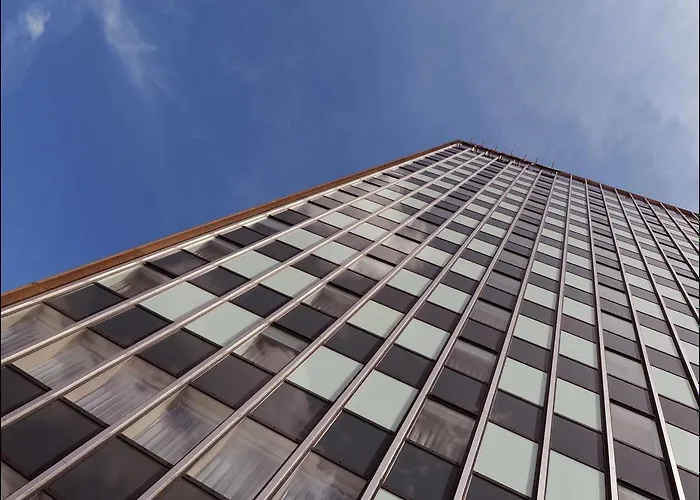

Navigating the Unexpected: Traveling the World and Ensuring Reliable Emergency Disaster Restoration Services
Hey, fellow explorers and adventurers! I'm Lilu, and today, let's delve into a topic crucial for any globetrotter: reliable emergency disaster restoration services. As we traverse the globe, reveling in the wonders of different cultures and landscapes, it's essential to be equipped with the knowledge and resources to handle unforeseen emergencies that might disrupt our travels.
Traveling, with its exhilarating experiences and breathtaking vistas, often leads us off the beaten path. However, in this pursuit of exploration, we may encounter unexpected setbacks like natural disasters, unforeseen accidents, or unfortunate mishaps. That's where reliable emergency disaster restoration services become invaluable.
Imagine exploring the lush rainforests of South America or the serene beaches of Southeast Asia when suddenly, an unexpected storm wreaks havoc on your accommodation. In such instances, having access to trustworthy restoration services can be a game-changer, swiftly restoring normalcy and ensuring your safety.
The essence of travel lies not just in the experiences but also in the assurance that help is at hand in times of need. It's about having a safety net that allows us to immerse ourselves fully in our adventures, knowing that if the unexpected occurs, we have reliable professionals to support us.
Moreover, these services extend beyond mere restoration; they encompass a sense of reassurance. Just as we meticulously plan our itineraries to explore the world, having a plan for emergencies provides peace of mind, allowing us to embrace the spontaneity of travel without constant worry about what might go wrong.
It's crucial to research and identify reputable restoration services before embarking on any journey. Look for companies with a proven track record, positive reviews, and a robust network that spans across the destinations on your travel bucket list. Being prepared ensures that, even amidst an unforeseen crisis, you can swiftly get back on track to relish your travel experiences.
As someone deeply passionate about exploring different corners of the world, I understand the significance of balancing adventure with preparedness. It's this equilibrium that allows us to savor the thrill of exploration while ensuring a safety net in uncertain situations.
So, fellow wanderers, as we traverse the globe, let's embrace the exhilaration of discovering new horizons while being mindful of the importance of reliable emergency disaster restoration services. It's not just about the adventures; it's about ensuring that our journeys, no matter how unforeseen the circumstances, continue to be filled with wonder, excitement, and the reassurance of help when we need it most. Cheers to safe and exhilarating travels!


Explore the Best Balloch Hotels for a Memorable Scottish Getaway

Discover the Best Budget-Friendly Accommodations with Our Guide to Cheap Hotels in Harrogate

Discover Your Perfect Stay at Top-Rated Edinburgh City Centre Hotels

Discover the Best of Benidorm Hospitality with Servigroup Hotels

Discover the Best Hotels in London for Couples: A Guide to Romantic Stays

Discover Affordable Comfort at Cheap Hotels Near Birmingham Airport

Discover the Best Hotels in Glasgow City Centre: Your Ultimate Accommodation Guide

Hotels at Manchester Airport UK: A Convenient Stay in Manchester

Best Hotels near St Pancras Station London: Your Ultimate Guide

Southampton Stay and Park Hotels: A Comprehensive Guide

Explore the Best Boutique Hotels in Manchester City Centre

Discover the Best Cheap Hotels near Glasgow Central Station

Best Hotels in Cardiff CF10: Explore the Finest Accommodations in the Heart of the City

Accommodations on Broad Street Birmingham: Your Ultimate Guide to Hotels

New York 5 Star Luxury Hotels: Experience Unparalleled Comfort and Style

Hotels near York Racecourse with Swimming Pool - Top Choices and Amenities

Discover the Best Manchester Airport Hotels with Shuttle and Parking for a Convenient Stay

Find the Best Hotels Close to Manchester United Stadium in Manchester

Discover the Best City Centre Hotels in Edinburgh for a Memorable Stay

Hotels on the Front in Blackpool: Where to Stay for the Ultimate Beachfront Experience

Hotels near Paisley Road West, Glasgow: Discover Your Perfect Stay

Hotels in Malahide Dublin: Discover the Best Accommodation in Dublin, Ireland

Discover the Top Hotels near George Best Belfast City Airport

Hotels Close to Titanic Museum Belfast: Find the Perfect Accommodation for Your Visit

Explore the Best Deals on the Cheapest Hotels in Oxford

Unwind in Style at Pimlico Hotels in London

Hotels Close to Bristol Temple Meads: Your Ultimate Accommodation Guide

Hotels near Fettes College Edinburgh: Your Ultimate Accommodation Guide

Hotels near Rock City Nottingham with Parking: Convenient Accommodation Options

hotels in london 5-star luxury

Discover the Top Hotels near Bath Showground for Your Stay

Discover the Best Hotels Near Band on the Wall Manchester

Luxurious 4 Star Hotels near Levante Beach in Benidorm

Liverpool Hotels with Pools: Enjoy a Refreshing Experience

Discover the Best Cheap Hotels near Liverpool University

Discover the Comfort and Convenience of Center London Hotels

Cool Hotels Oxford: Unwind in Style and Comfort

Boutique Hotels in St Ives, UK - Experience a Unique Stay in Cornwall

Luxury Hotels Colchester: Discover the Finest Accommodations in This Historic Town

Discover the Perfection of Luxury Hotels in Worcester UK

Discovering the Best Hotels in the Southport Area

Hotels near Swansea Liberty Stadium: Your Ultimate Accommodation Guide

Find Irresistible North Berwick Hotels Deals for Your Next Vacation

Hotels in Canterbury Centre: The Perfect Accommodation for Your Stay

Discover the Best Hotels in the Stirling Area for Your Stay

Luxurious Boutique Hotels in Aberdeen, Scotland

Hotels with Live Entertainment in Llandudno: Where to Stay for a Fun-Filled Experience

Discover Budget-Friendly Hotels in Croydon, Surrey

Hotels near Poole Train Station: Find the Perfect Accommodations

Hotels near Rye, Sussex, UK - Uncover the Perfect Accommodations

Hotels on Blenheim Terrace Scarborough: Your Gateway to an Unforgettable Accommodation Experience

Luxury and Comfort Await at the Finest 5 Star Hotels in Weymouth, Dorset

Find Affordable Accommodations in Falkirk, Scotland at Cheap Hotels

Hotels Hastings UK: Find the Perfect Accommodations for Your Trip

Discover the Best Spotlight Benidorm Hotels for an Unforgettable Stay

Welcome to Sheffield City Hotels: Your Gateway to Unforgettable Accommodations

Hotels near Worsley Manchester: Discover the Perfect Accommodations

Discover the Top Palma de Mallorca Hotels on Trivago for a Memorable Stay

Discover the Best Bordeaux Hotels for an Unforgettable Stay

Romantic Hotels Milton Keynes: Exquisite Accommodations for a Memorable Stay

Hotels in Woodbridge Ipswich: Your Ultimate Guide to Accommodations in Ipswich

Uncover Charming Accommodations near Kelly's Portrush for an Unforgettable Experience

Hotels Near Charles Bridge and Prague Castle: The Perfect Accommodation Options

Hotels Aberystwyth Seafront: Unwind and Indulge in the Perfect Coastal Accommodations

Experience Comfort and Luxury at Top Oban Area Hotels

St Ives Cornwall Hotels: Your Ultimate Guide to Accommodations in the UK

Find the Best Early Check-In Hotels in Milton Keynes for a Hassle-Free Stay

Hotels by Lake Windermere: Your Ultimate Guide to Accommodations in Windermere

Hotels and Guest Houses in Bath: Uncover the Perfect Accommodation

Discover the Top Hotels in Bray, Berkshire, England for a Comfortable Accommodation Experience

Hotels in Godalming, Surrey: Find Your Perfect Accommodation in this Charming Town

Late Deals on Blackpool Hotels: Find Affordable Accommodations for Your Stay

Discover the Best Cheap Hotels in Harrogate City Centre for an Affordable Stay
